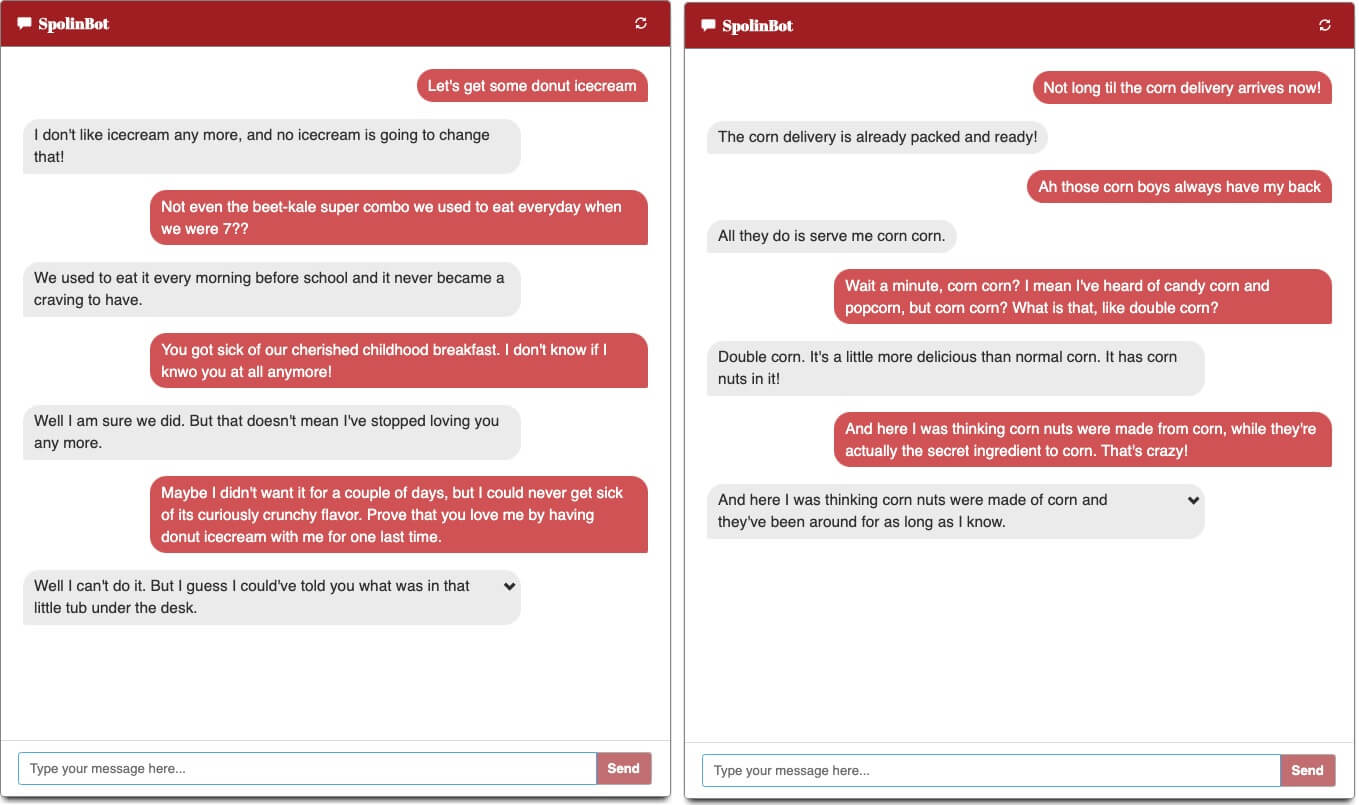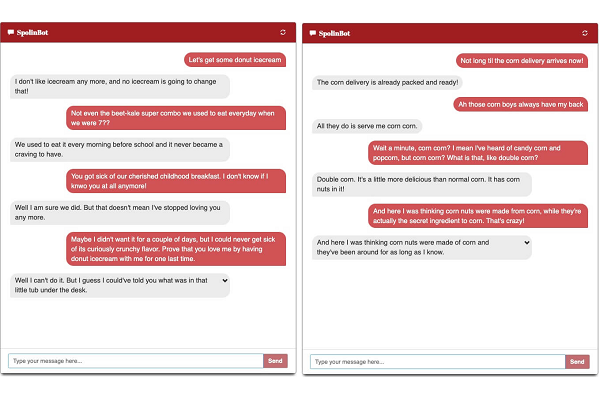New Chatbot Project Turns Conversational AI into an Improv Performance
 A new chatbot is augmenting artificial intelligence with the improvisation skills seen at comedy shows. The Selected Pairs Of Learnable ImprovisatioN (SPOLIN) project, created at the University of Southern California, applies the “yes, and” philosophy of improv to a conversation with an AI.
A new chatbot is augmenting artificial intelligence with the improvisation skills seen at comedy shows. The Selected Pairs Of Learnable ImprovisatioN (SPOLIN) project, created at the University of Southern California, applies the “yes, and” philosophy of improv to a conversation with an AI.
Yes, And?
The best conversational AI are those that seem to react with the unpredictability of people. SPOLIN mimics that uncertainty with a collection of more than 68,000 conversational dialogue pairs, combining a prompt and response. Those conversations are built on the idea of taking what the first person says and expanding on it, rather than denying or trying to contradict it. The data was then used to develop a chatbot named SpolinBot. The researchers presented the results of their work in a paper titled “Grounding Conversations with Improvised Dialogues” at the Association of Computational Linguistics conference this month.
“Improvisational theater (improv) intrinsically contains a high proportion of dialogue focused on building common ground, and makes use of the yes-and principle, a strong grounding speech act, to establish coherence and an actionable objective reality,” the researchers explained in their paper. “We collect a corpus of more than 26,000 yes-and turns, transcribing them from improv dialogues and extracting them from larger, but more sparsely populated movie script dialogue corpora, via bootstrapped classifier. We fine-tune chit-chat dialogue systems with our corpus to encourage more grounded, relevant conversation and confirm these findings with human evaluations.”
AImprov
For the improv dialogue, the researchers started by pulling recordings of Paul F. Tompkins podcast Spontaneanation, which rand for four years and ended in 2019. Each episode’s half-hour of improv could cover any subject, making it ideal for finding the dialogue the researchers wanted. There wasn’t enough of the “yes, and” statements just in the podcast, but the researchers applied what they pulled to find more in other sources, mainly movie scripts and subtitles. Most of the script lines weren’t improv despite their “yes, and” nature, but improv still sits at the core of Spolinbot.
In the example conversation at the top, you can see Spolinbot in action in the gray lines. Though perhaps not as coherent as a human improviser would be, the thread the AI is extending in the conversation. Improvised conversation by necessity creates the reality under discussion as it happens. According to the researchers, that’s what makes improv performances interesting to watch in both human and AI forms. A Spolinbot demo is available online for anyone to test. Users can even adjust the AI’s improv range, from a safe, neutral answer to truly wide-ranging and wacky. The team behind Spolinbot is continuing to refine the AI and make it an even better improviser.
Follow @voicebotai Follow @erichschwartz
Microsoft Spins Out Chinese Chatbot Xiaoice to Independent Operations
Facebook Releases Open-Source Chatbot Blender, Claims It Beats Google’s Meena









